Pelvic floor injury during vaginal birth is life-altering and preventable: what can we do about it?
- PMID: 38168908
- PMCID: PMC11177602
- DOI: 10.1016/j.ajog.2023.11.1253
Pelvic floor injury during vaginal birth is life-altering and preventable: what can we do about it?
Abstract
Pelvic floor disorders after childbirth have distressing lifelong consequences for women, requiring more than 300,000 women to have surgery annually. This represents approximately 10% of the 3 million women who give birth vaginally each year. Vaginal birth is the largest modifiable risk factor for prolapse, the pelvic floor disorder most strongly associated with birth, and is an important contributor to stress incontinence. These disorders require 10 times as many operations as anal sphincter injuries. Imaging shows that injuries of the levator ani muscle, perineal body, and membrane occur in up to 19% of primiparous women. During birth, the levator muscle and birth canal tissues must stretch to more than 3 times their original length; it is this overstretching that is responsible for the muscle tear visible on imaging rather than compression or neuropathy. The injury is present in 55% of women with prolapse later in life, with an odds ratio of 7.3, compared with women with normal support. In addition, levator damage can affect other aspects of hiatal closure, such as the perineal body and membrane. These injuries are associated with an enlarged urogenital hiatus, now known as antedate prolapse, and with prolapse surgery failure. Risk factors for levator injury are multifactorial and include forceps delivery, occiput posterior birth, older maternal age, long second stage of labor, and birthweight of >4000 g. Delivery with a vacuum device is associated with reduced levator damage. Other steps that might logically reduce injuries include manual rotation from occiput posterior to occiput anterior, slow gradual delivery, perineal massage or compresses, and early induction of labor, but these require study to document protection. In addition, teaching women to avoid pushing against a contracted levator muscle would likely decrease injury risk by decreasing tension on the vulnerable muscle origin. Providing care for women who have experienced difficult deliveries can be enhanced with early recognition, physical therapy, and attention to recovery. It is only right that women be made aware of these risks during pregnancy. Educating women on the long-term pelvic floor sequelae of childbirth should be performed antenatally so that they can be empowered to make informed decisions about management decisions during labor.
Keywords: enlarged hiatus; forceps delivery; levator ani avulsion; occiput posterior; pelvic floor disorders; pelvic floor injury; pelvic organ prolapse; postpartum care; prenatal education; prevention; rehabilitation; stress urinary incontinence; vaginal birth.
Copyright © 2023 Elsevier Inc. All rights reserved.
Conflict of interest statement
Figures

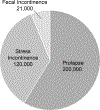
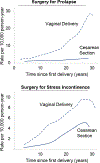

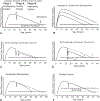


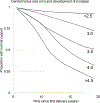

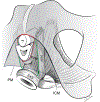





References
Publication types
MeSH terms
Grants and funding
LinkOut - more resources
Full Text Sources
Medical

